Abstract
Vervet monkeys received food reinforcement contingent on autogrooming. Experiment 1 reinforced grooming on a schedule of increasing intermittency and grooming increased in frequency and duration; with only pauses reinforced, grooming decreased in frequency and duration. Experiment 2 demonstrated differentiation of operant autogrooming; in each session a different single form of grooming was reinforced (for example, grooming the tail only), and that form increased in frequency while other forms became less frequent. In Experiment 3 scratching was succesfully conditioned with a method that selectively reinforced variety in behavior; reinforcement was contingent on a shift in scratching form. In Experiment 4, with no contingencies on grooming, a prefood stimulus did not increase autogrooming whether or not grooming had previously resulted in contingent reinforcement. The form of conditioned autogrooming resembled the form of unconditioned autogrooming. The discussion suggests how reinforcement principles can account for changes in the topography of operant behavior.
Keywords: operant autogrooming, operant scratching, response differentiation, response topography, response variety, resurgence, variable-duration schedule, fixed-duration schedule, vervet monkeys
Full text
PDF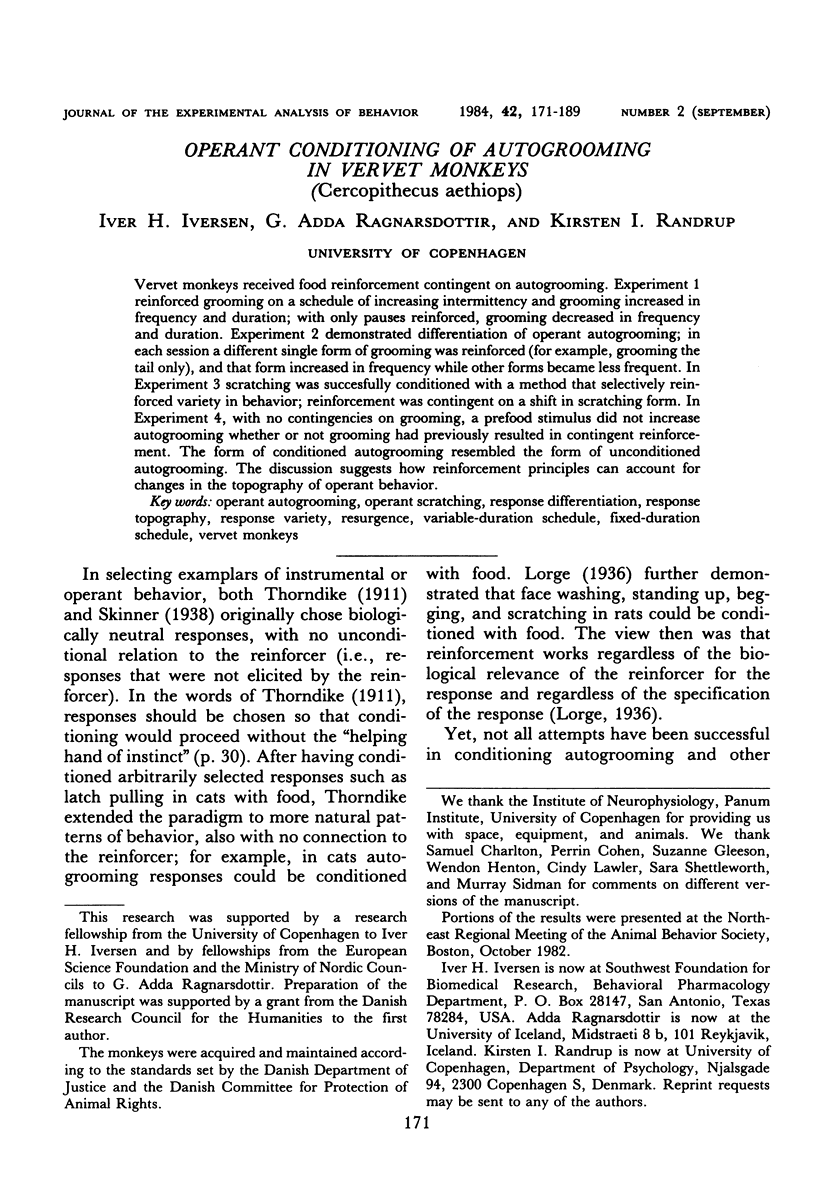
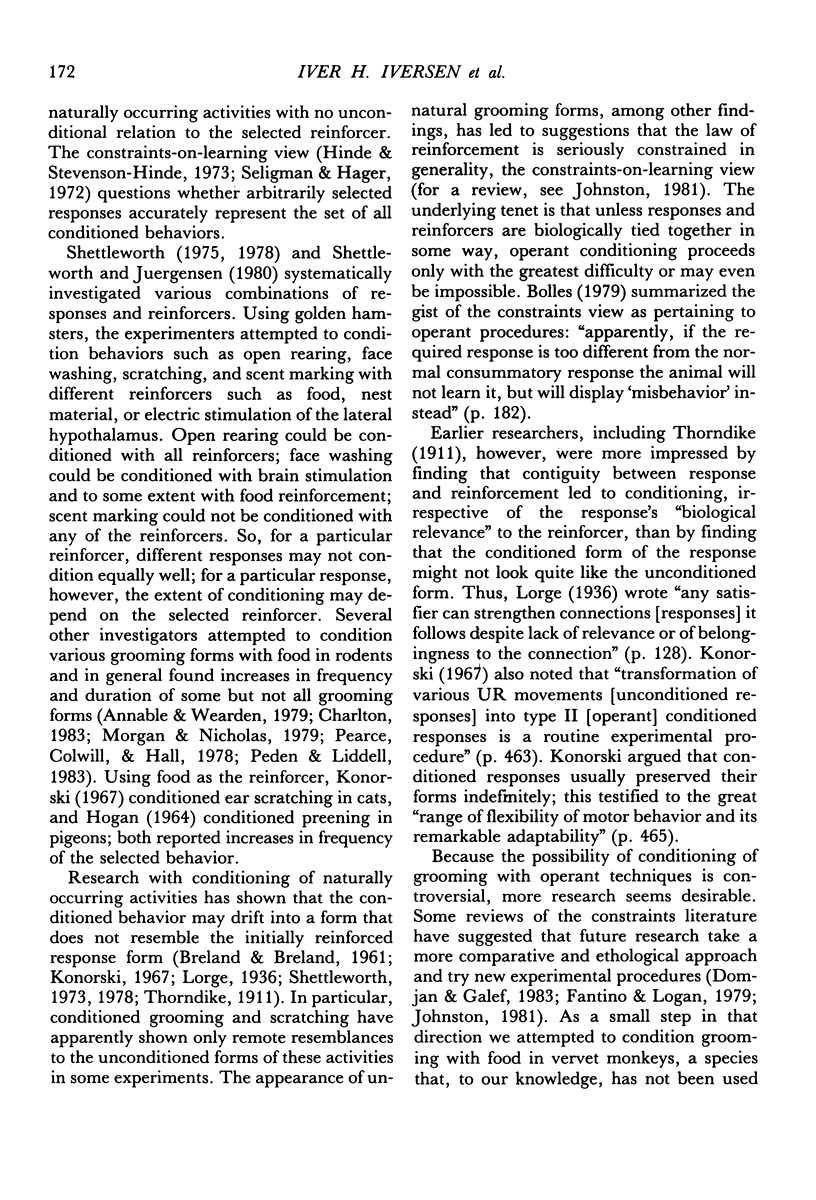
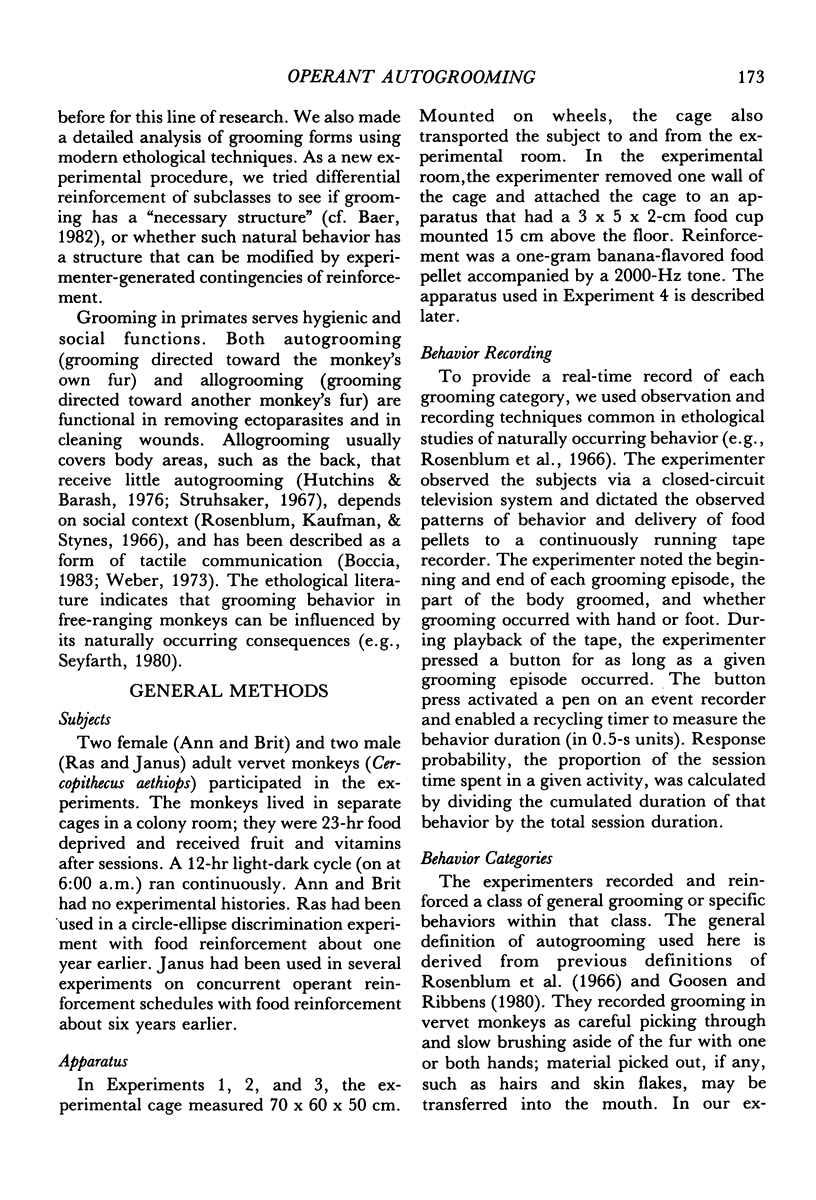
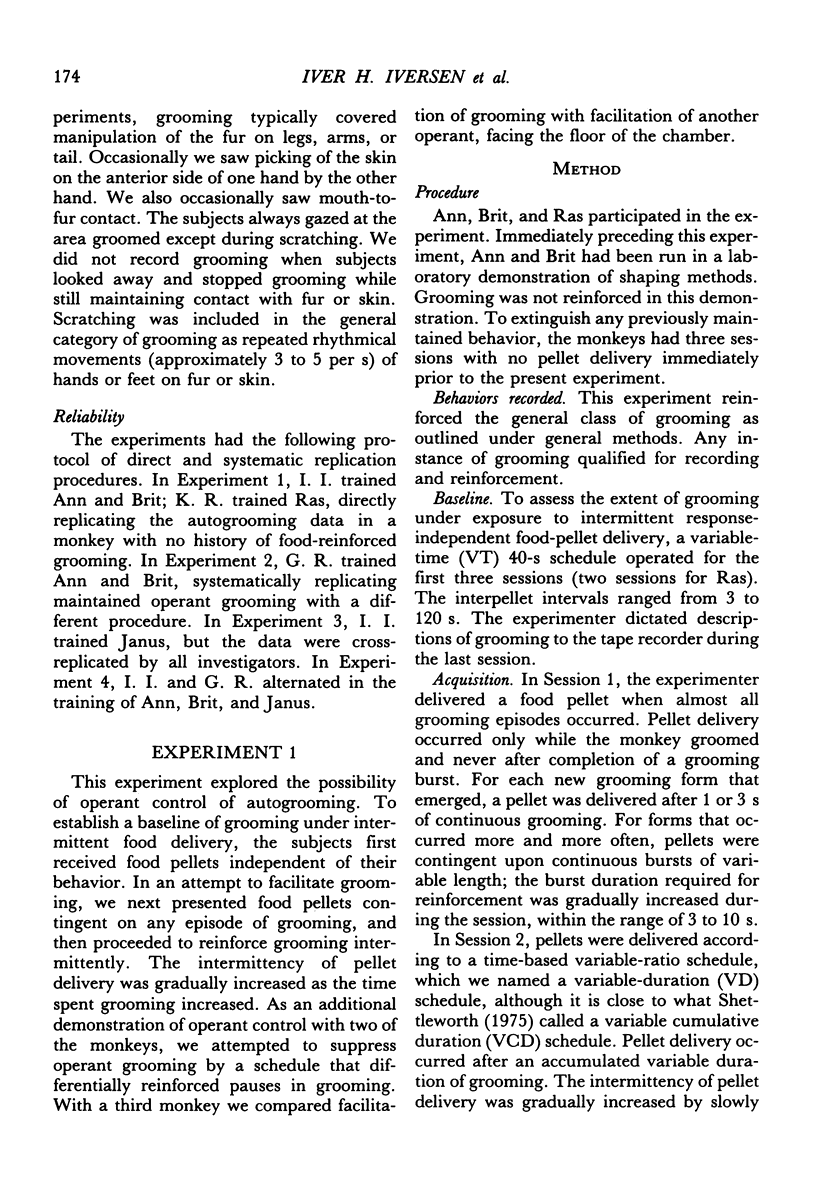
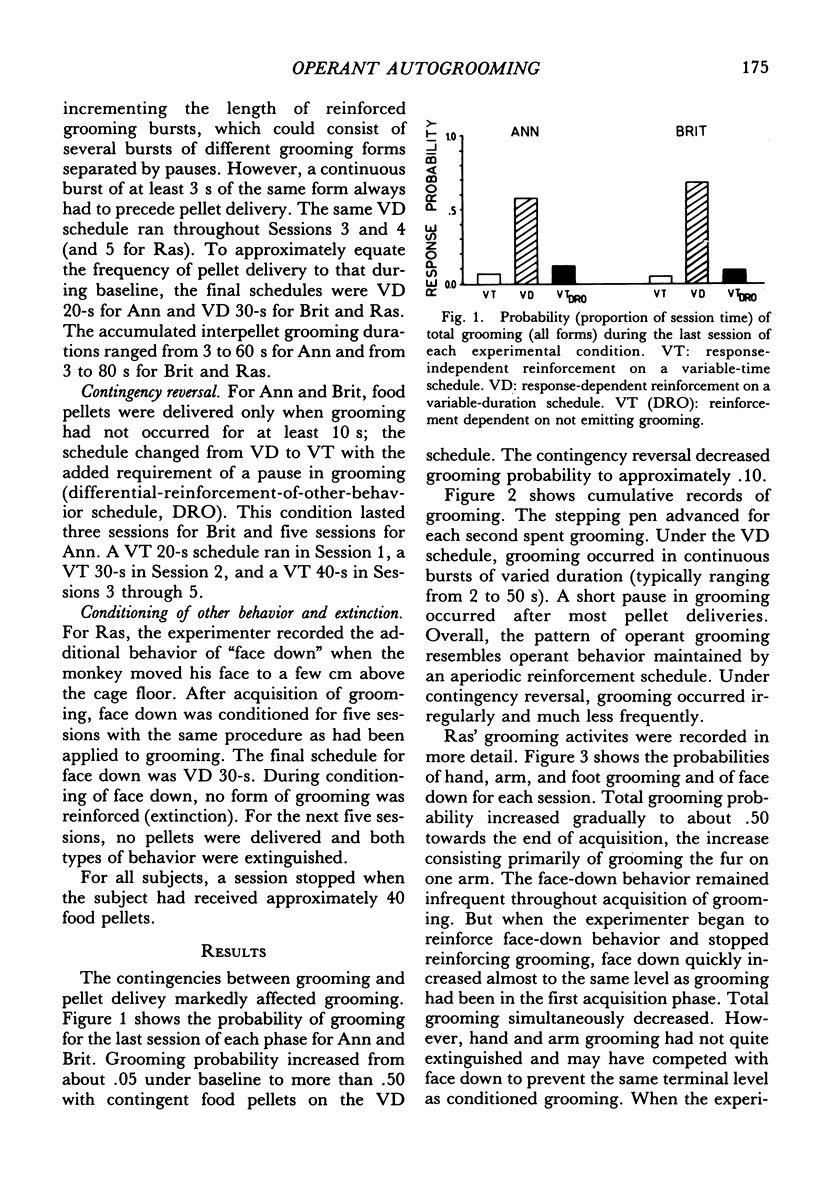
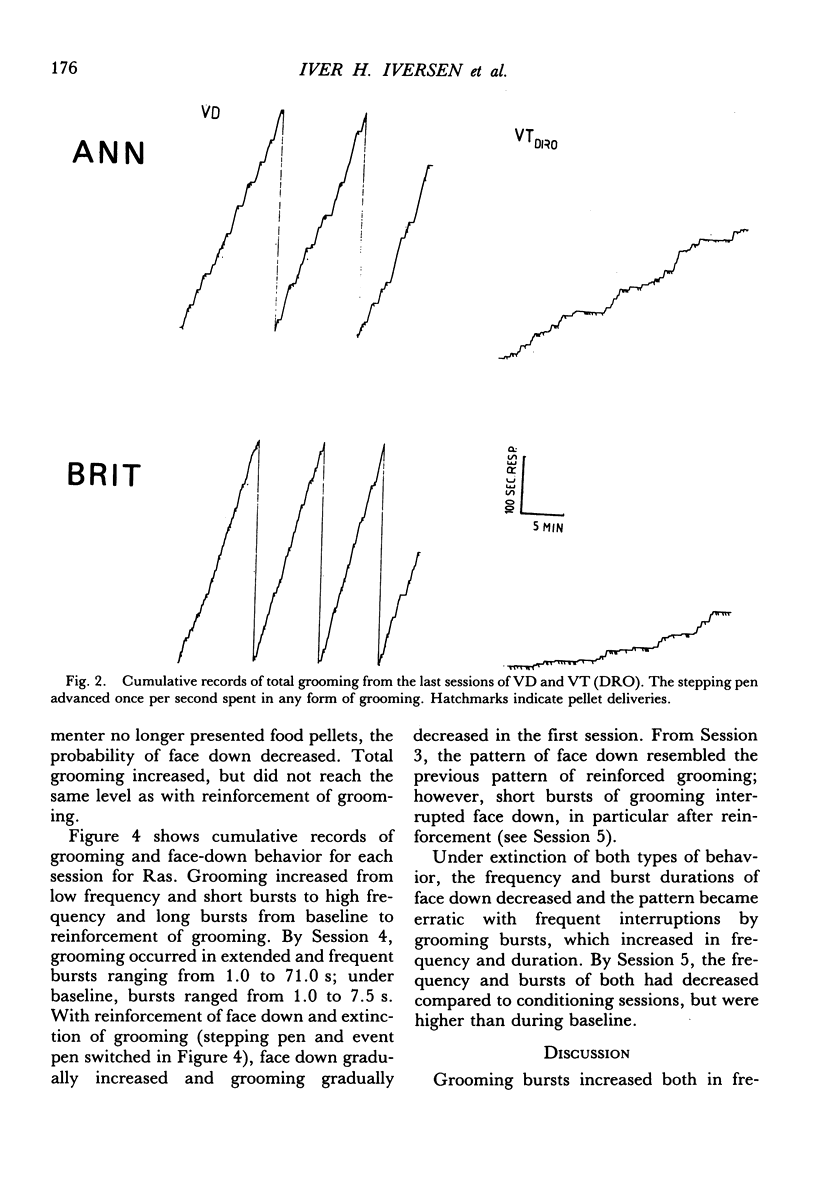
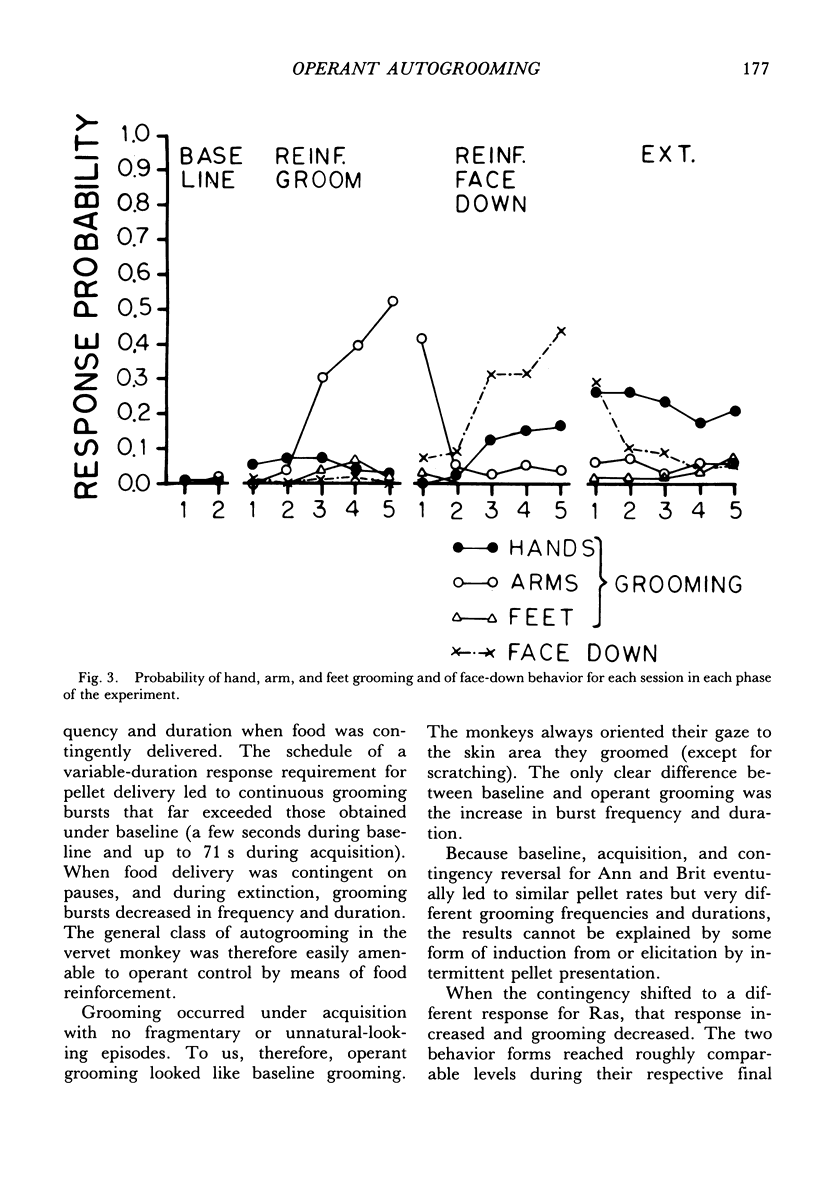
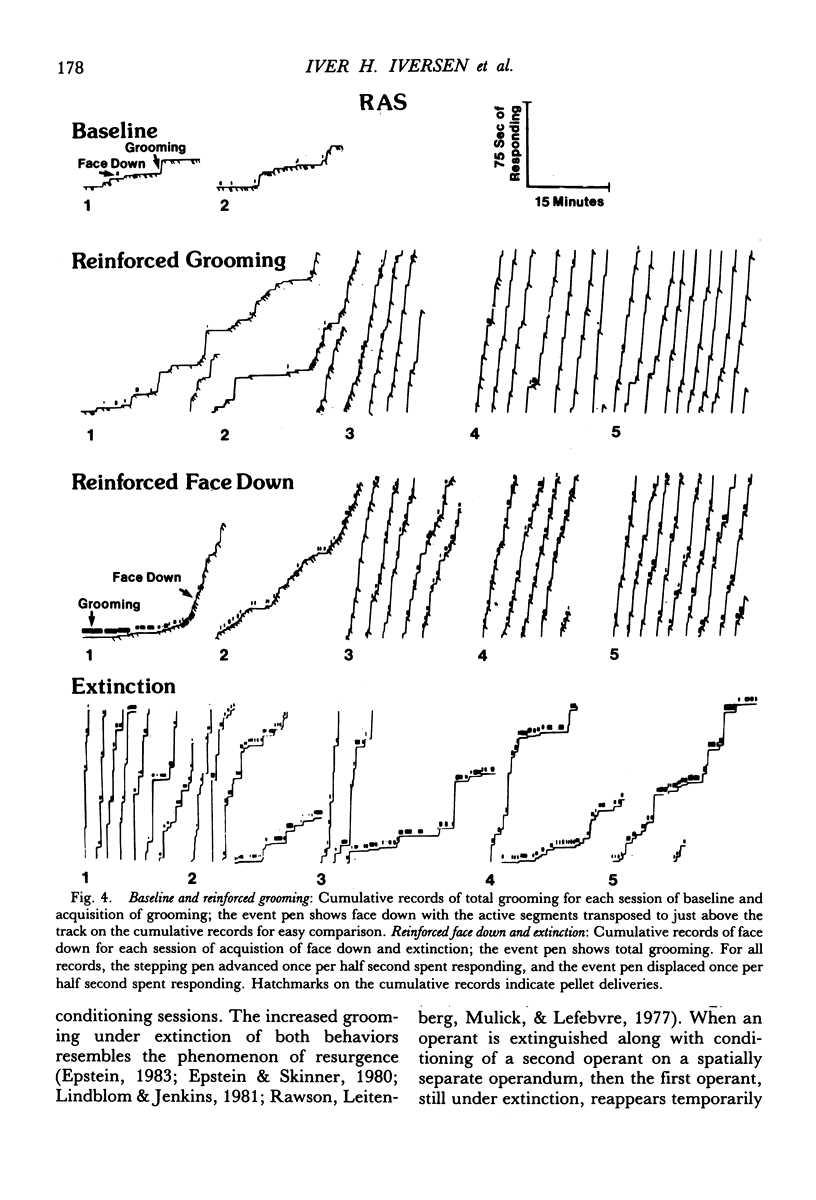
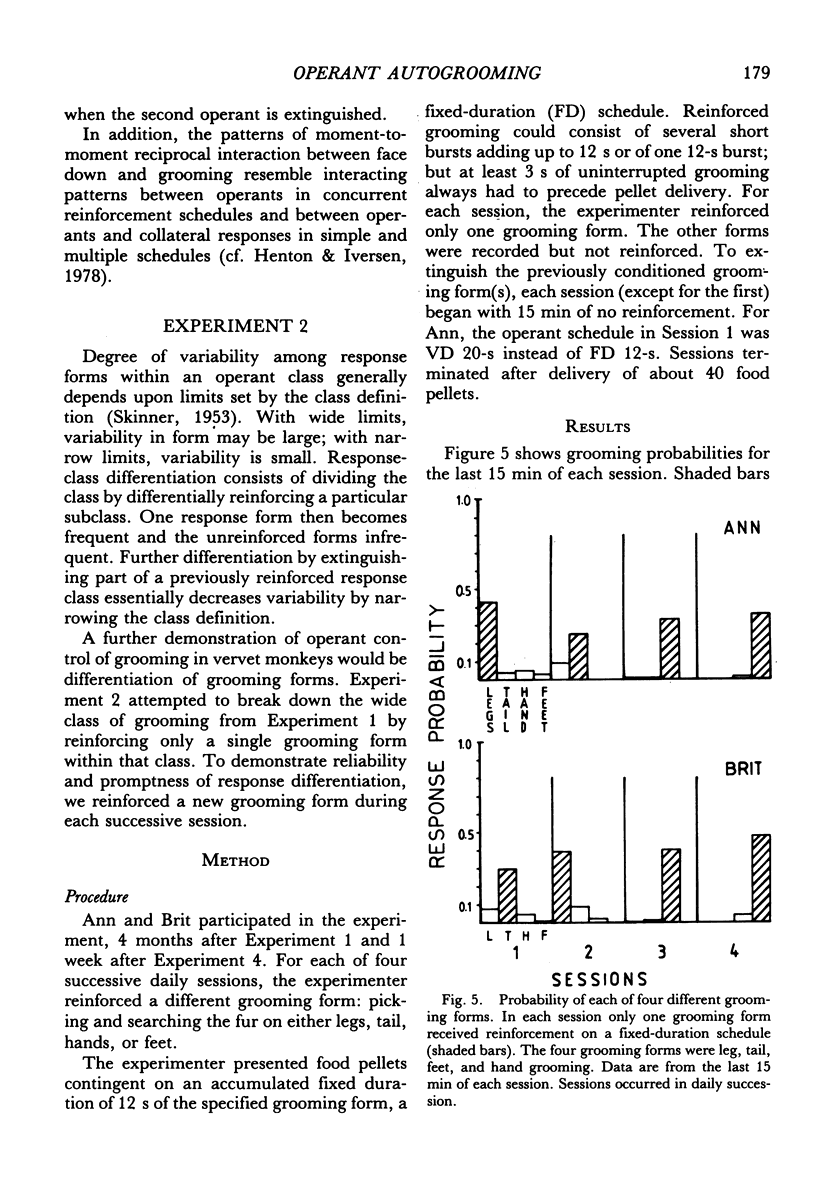
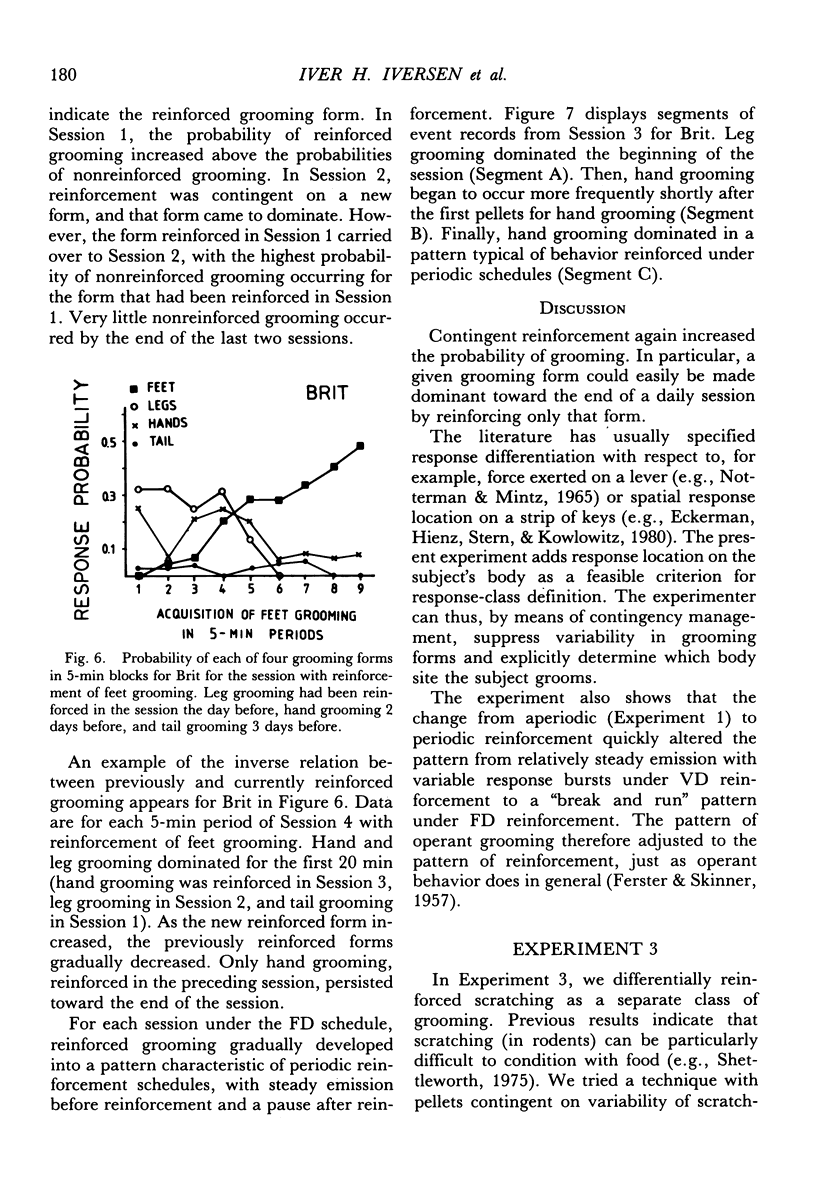
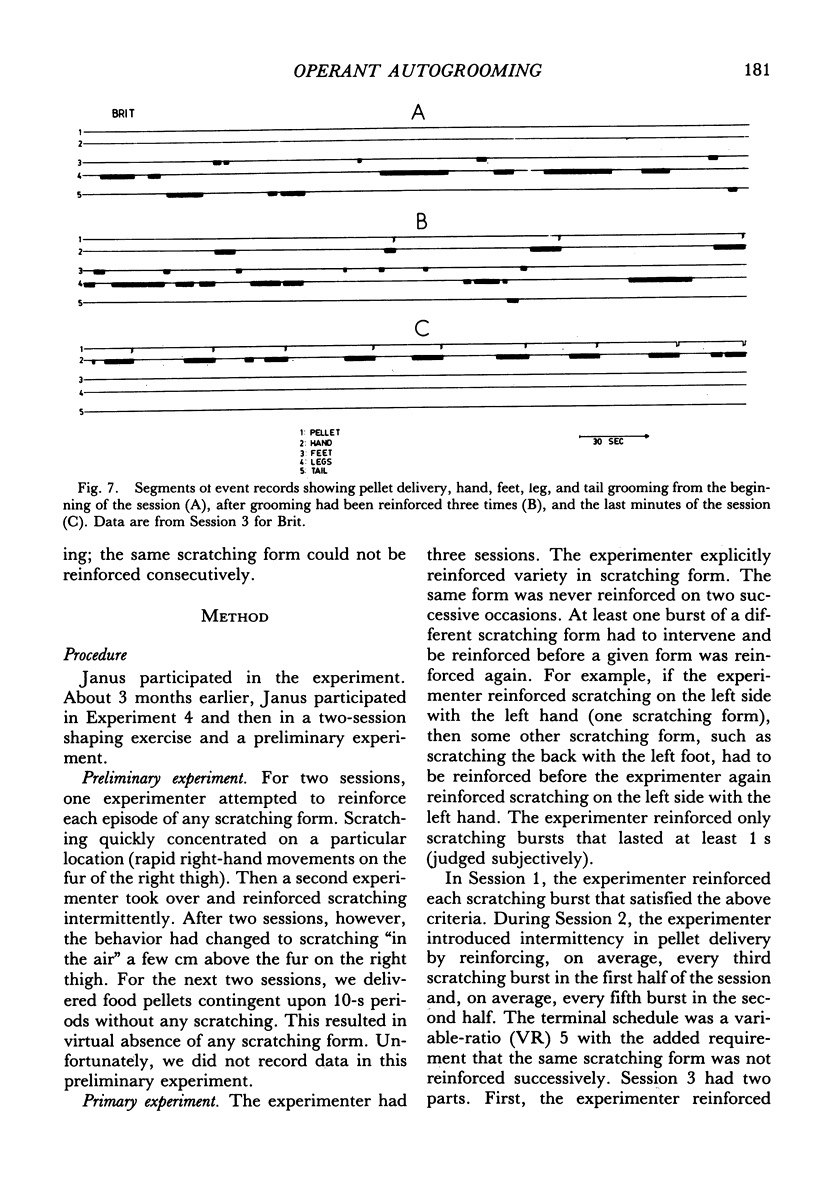

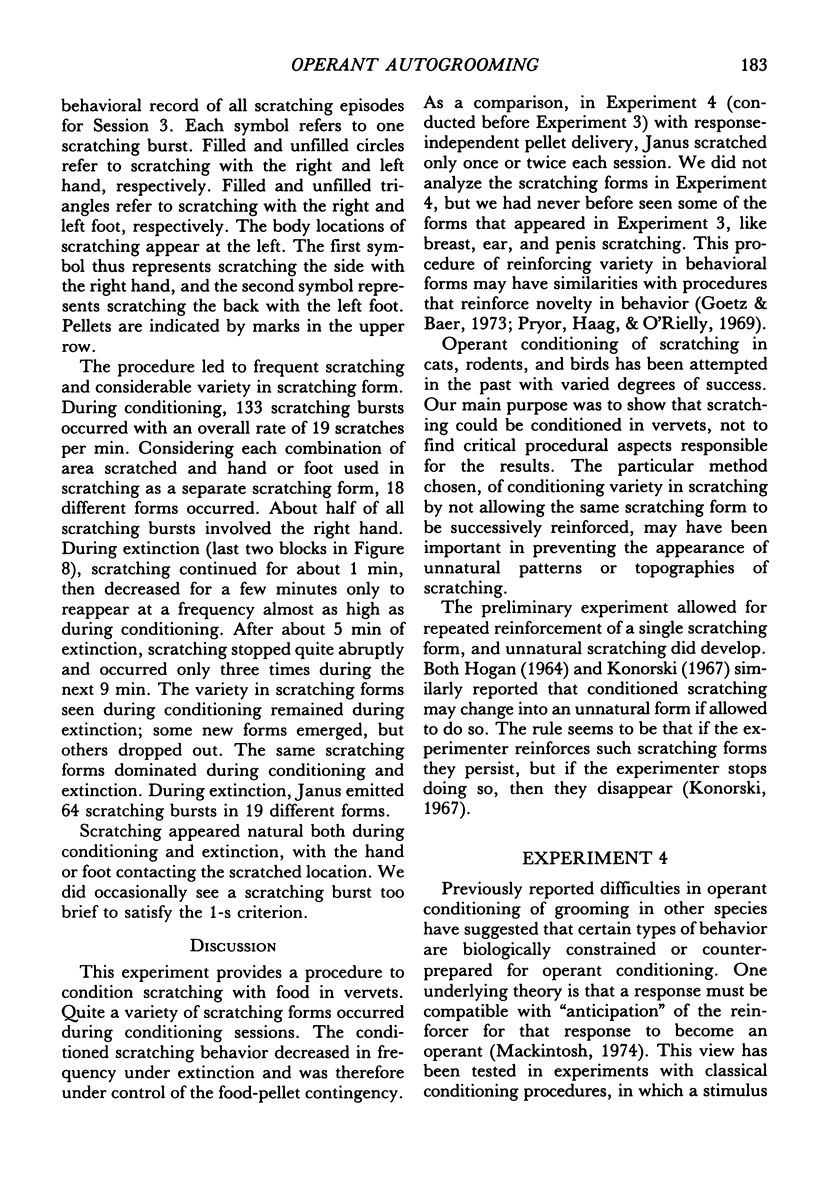
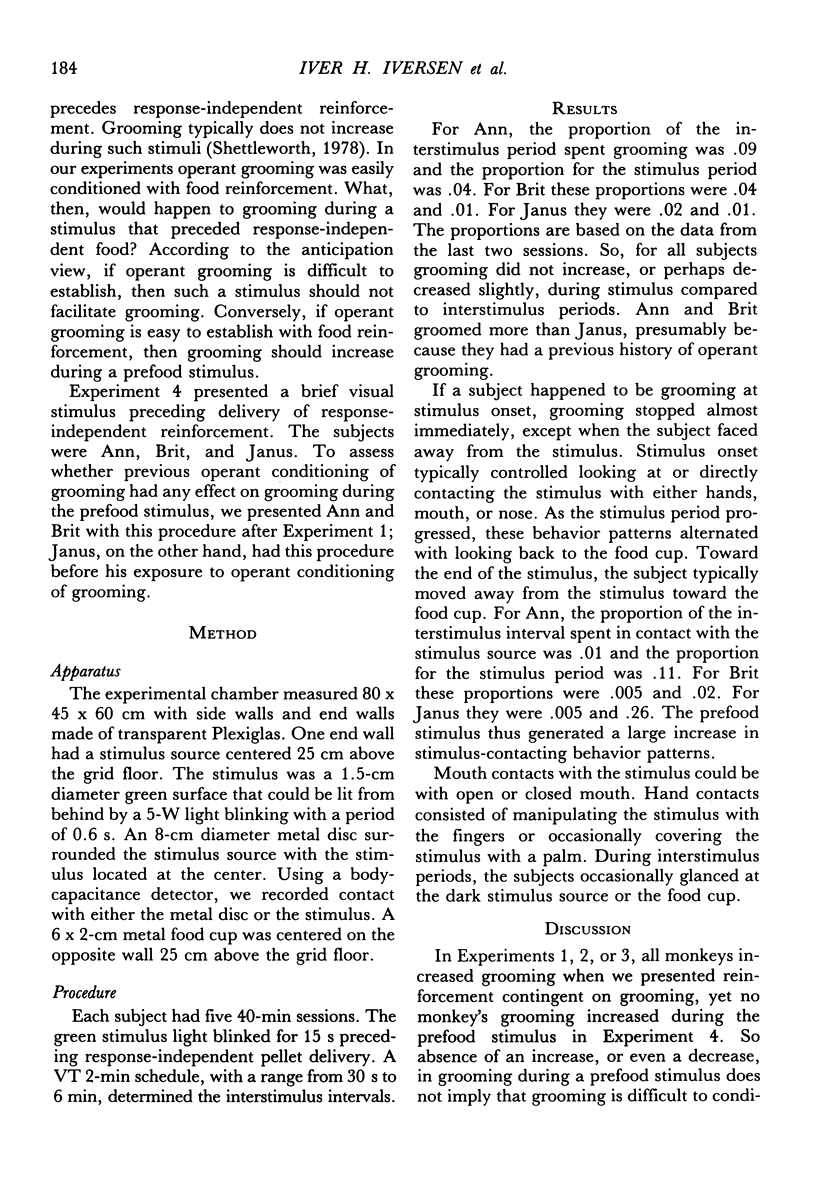
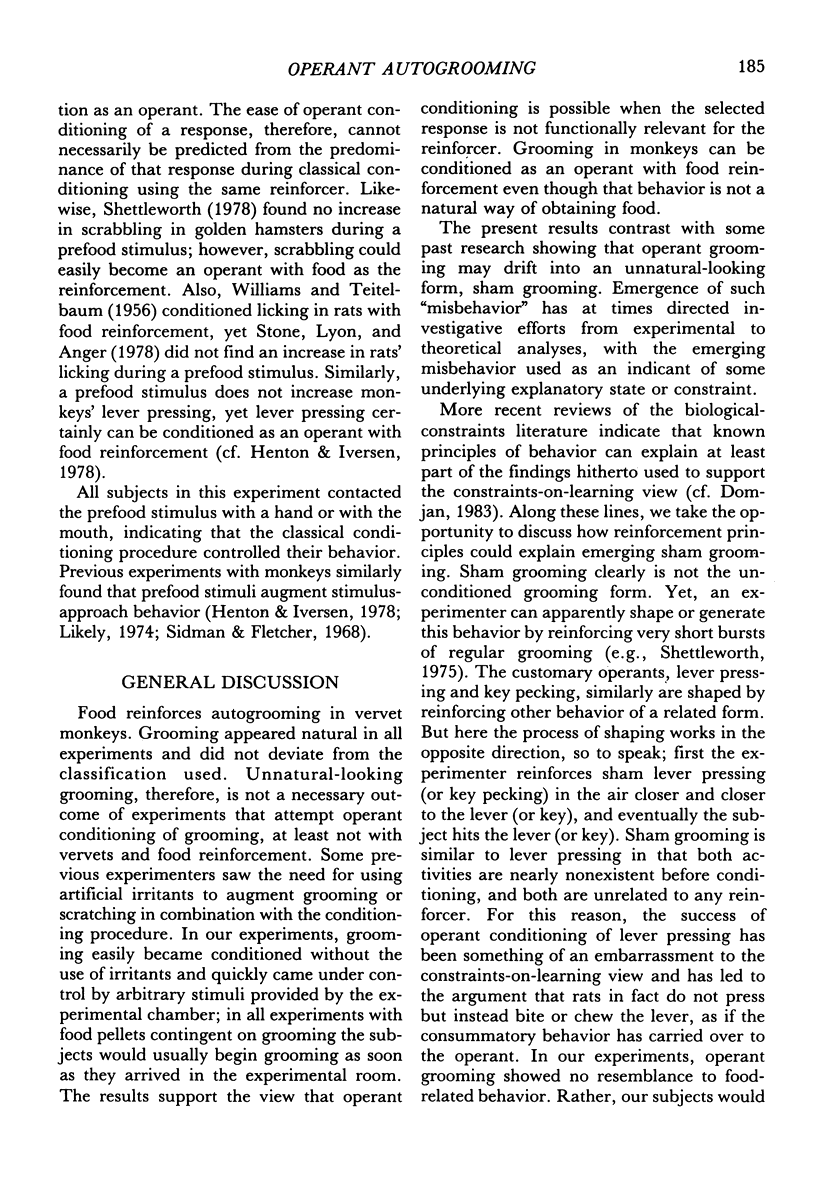
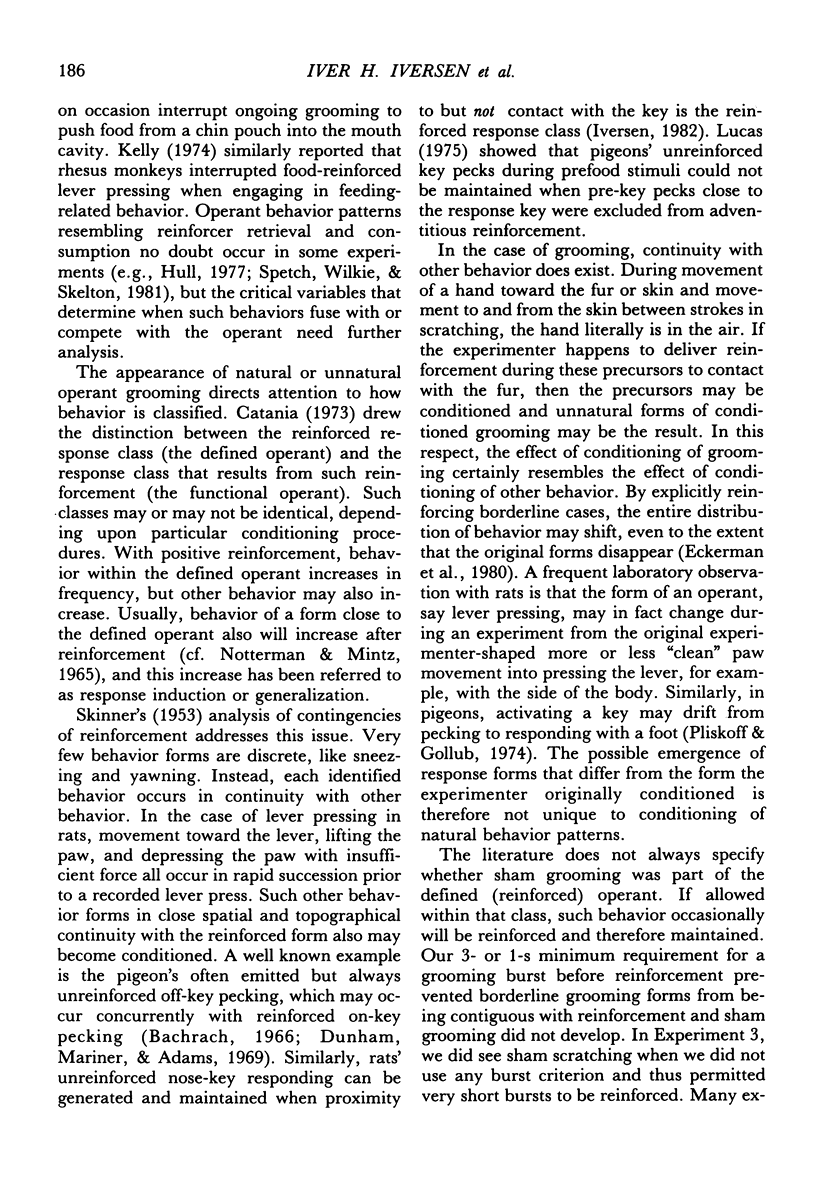
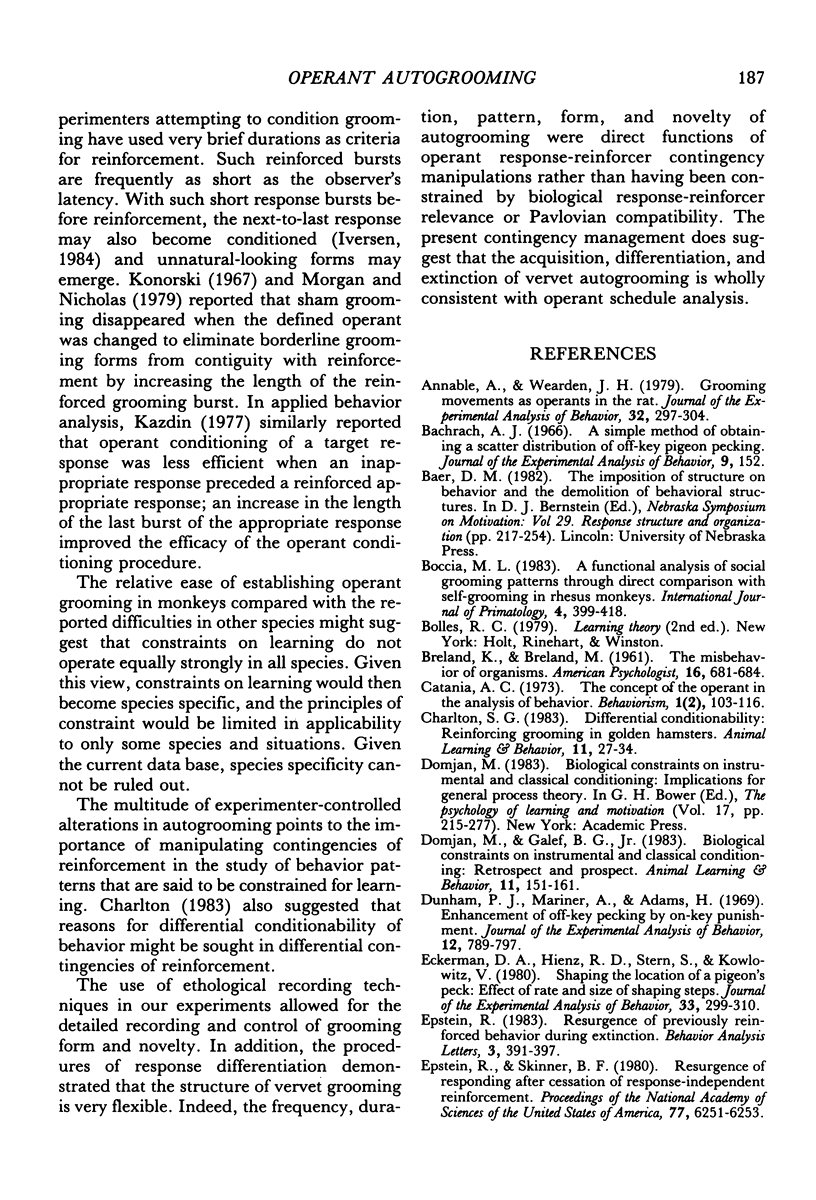
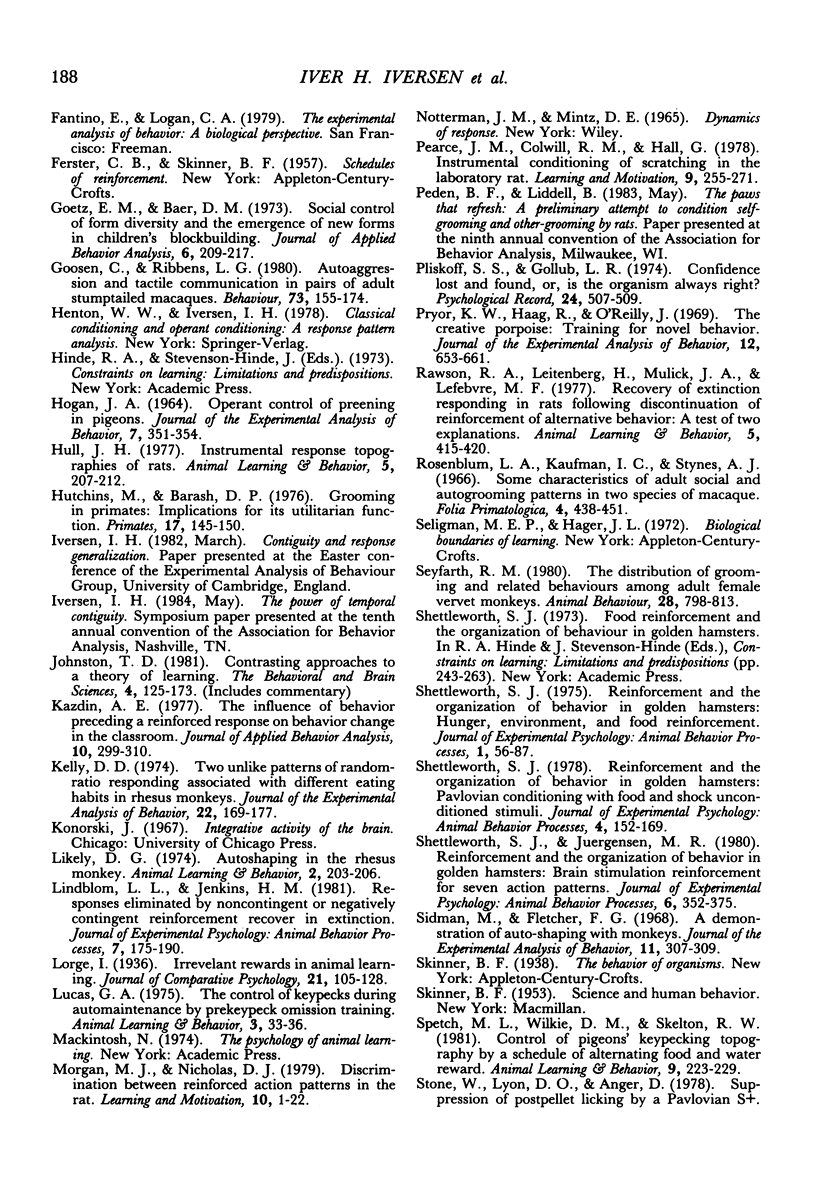
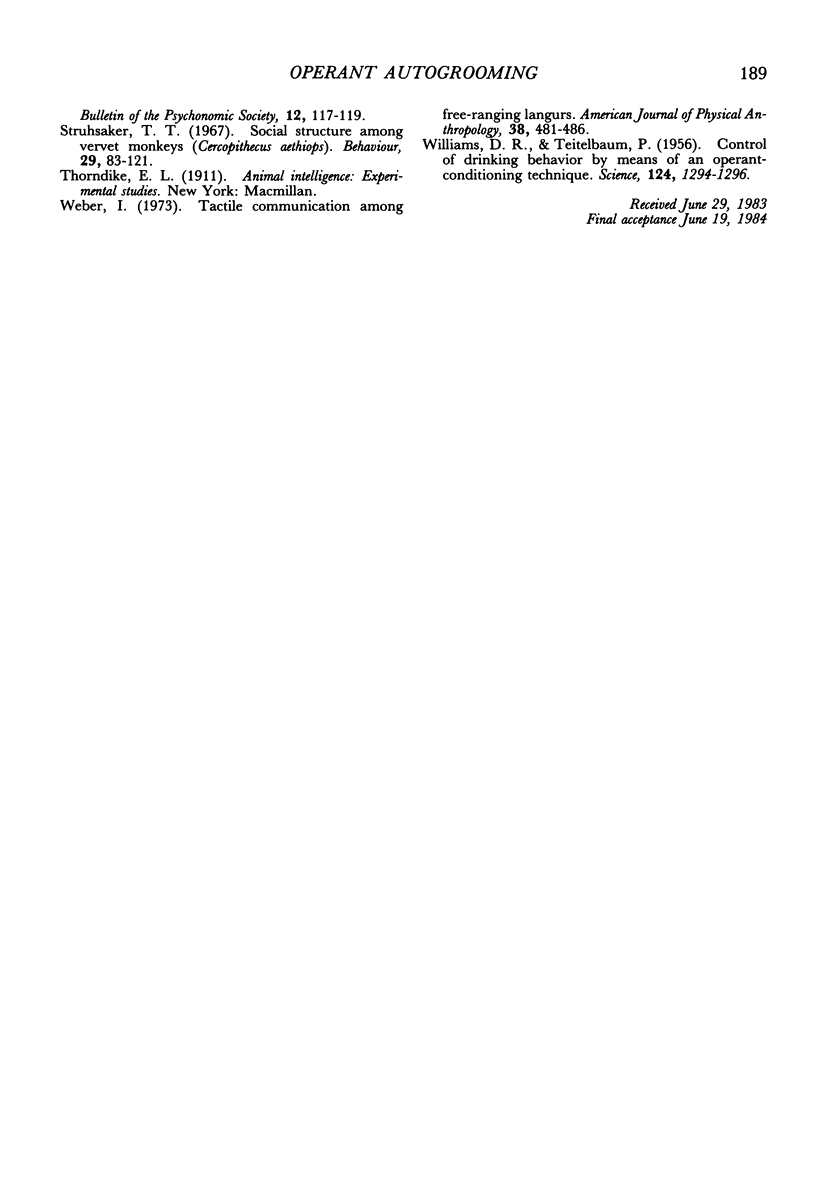
Selected References
These references are in PubMed. This may not be the complete list of references from this article.
- Annable A., Wearden J. H. Grooming movements as operants in the rat. J Exp Anal Behav. 1979 Nov;32(3):297–304. doi: 10.1901/jeab.1979.32-297. [DOI] [PMC free article] [PubMed] [Google Scholar]
- Bachrach A. J. A simple method of obtaining a scatter distribution of off-key pigeon pecking. J Exp Anal Behav. 1966 Mar;9(2):152–152. doi: 10.1901/jeab.1966.9-152. [DOI] [PMC free article] [PubMed] [Google Scholar]
- Dunham P. J., Mariner A., Adams H. Enhancement of off-key pecking by on-key punishment. J Exp Anal Behav. 1969 Sep;12(5):789–797. doi: 10.1901/jeab.1969.12-789. [DOI] [PMC free article] [PubMed] [Google Scholar]
- Eckerman D. A., Hienz R. D., Stern S., Kowlowitz V. Shaping the location of a pigeon's peck: effect of rate and size of shaping steps. J Exp Anal Behav. 1980 May;33(3):299–310. doi: 10.1901/jeab.1980.33-299. [DOI] [PMC free article] [PubMed] [Google Scholar]
- Epstein R., Skinner B. F. Resurgence of responding after the cessation of response-independent reinforcement. Proc Natl Acad Sci U S A. 1980 Oct;77(10):6251–6253. doi: 10.1073/pnas.77.10.6251. [DOI] [PMC free article] [PubMed] [Google Scholar]
- Goetz E. M., Baer D. M. Social control of form diversity and the emergence of new forms in children's blockbuilding. J Appl Behav Anal. 1973 Summer;6(2):209–217. doi: 10.1901/jaba.1973.6-209. [DOI] [PMC free article] [PubMed] [Google Scholar]
- HOGAN J. A. OPERANT CONTROL OF PREENING IN PIGEONS. J Exp Anal Behav. 1964 Sep;7:351–354. doi: 10.1901/jeab.1964.7-351. [DOI] [PMC free article] [PubMed] [Google Scholar]
- Kazdin A. E. The influence of behavior preceding a reinforced response on behavior change in the classroom. J Appl Behav Anal. 1977 Summer;10(2):299–310. doi: 10.1901/jaba.1977.10-299. [DOI] [PMC free article] [PubMed] [Google Scholar]
- Kelly D. D. Two unlike patterns of random-ratio responding associated with different eating habits in rhesus monkeys. J Exp Anal Behav. 1974 Jul;22(1):169–177. doi: 10.1901/jeab.1974.22-169. [DOI] [PMC free article] [PubMed] [Google Scholar]
- Lindblom L. L., Jenkins H. M. Responses eliminated by noncontingent or negatively contingent reinforcement recover in extinction. J Exp Psychol Anim Behav Process. 1981 Apr;7(2):175–190. [PubMed] [Google Scholar]
- Pryor K. W., Haag R., O'reilly J. The creative porpoise: training for novel behavior. J Exp Anal Behav. 1969 Jul;12(4):653–661. doi: 10.1901/jeab.1969.12-653. [DOI] [PMC free article] [PubMed] [Google Scholar]
- Rosenblum L. A., Kaufman I. C., Stynes A. J. Some characteristics of adult social and autogrooming patterns in two species of macaque. Folia Primatol (Basel) 1966;4(6):438–451. doi: 10.1159/000155109. [DOI] [PubMed] [Google Scholar]
- Shettleworth S. J., Juergensen M. R. Reinforcement and the organization of behavior in golden hamsters: brain stimulation reinforcement for seven action patterns. J Exp Psychol Anim Behav Process. 1980 Oct;6(4):352–375. doi: 10.1037//0097-7403.6.4.352. [DOI] [PubMed] [Google Scholar]
- Shettleworth S. J. Reinforcement and the organization of behavior in golden hamsters: Pavlovian conditioning with food and shock unconditioned stimuli. J Exp Psychol Anim Behav Process. 1978 Apr;4(2):152–169. doi: 10.1037//0097-7403.4.2.152. [DOI] [PubMed] [Google Scholar]
- Sidman M., Fletcher F. G. A demonstration of auto-shaping with monkeys. J Exp Anal Behav. 1968 May;11(3):307–309. doi: 10.1901/jeab.1968.11-307. [DOI] [PMC free article] [PubMed] [Google Scholar]
- Struhsaker T. T. Social structure among vervet monkeys (Cercopithecus aethiops). Behaviour. 1967;29(2):6–121. [PubMed] [Google Scholar]
- TEITELBAUM P., WILLIAMS D. R. Control of drinking behavior by means of an operant-conditioning technique. Science. 1956 Dec 28;124(3235):1294–1296. doi: 10.1126/science.124.3235.1294. [DOI] [PubMed] [Google Scholar]
- Weber I. Tactile communication among free-ranging langurs. Am J Phys Anthropol. 1973 Mar;38(2):481–486. doi: 10.1002/ajpa.1330380251. [DOI] [PubMed] [Google Scholar]


